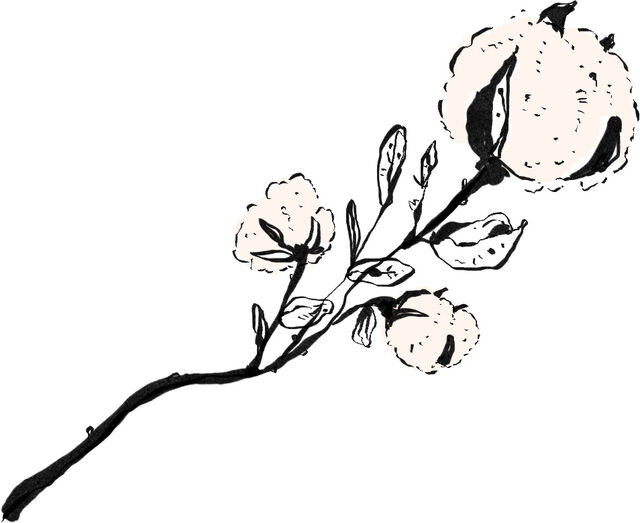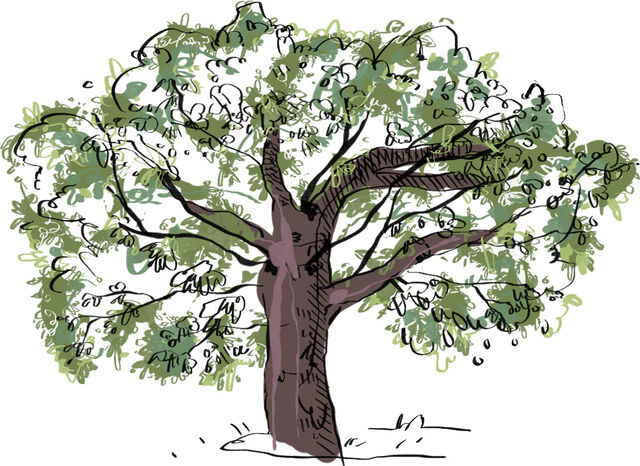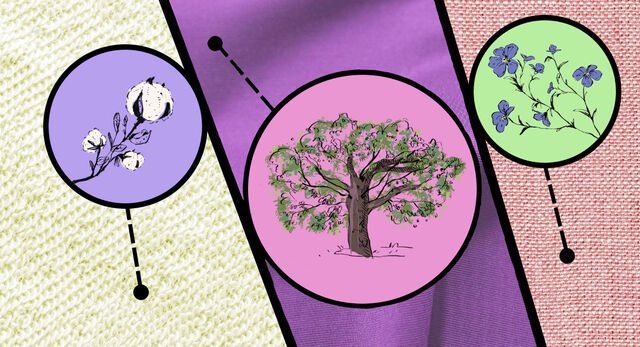Being more thoughtful about the clothes you buy means knowing what you’re dealing with. Which will keep you warmer: that old, handmade, 100-percent-wool sweater; or that stylish, vintage, acrylic one? It turns out, each type of fiber has its own distinct and quite magical properties.

LINEN
HISTORY
At least 10,000 years old, linen is one of the oldest fibers ever used for clothing
HOW IT’S MADE
Stems of the flax plant are wetted, beaten, and separated into long fibers that are spun into thread and woven or knit into fabric.
SUPERPOWER
Linen is very strong and, due to its hollow fibers, absorbent—it will sop sweat right up and leave you feeling dry. It also dries quite fast.
DOWNSIDES
Linen wrinkles easily and must be hand-washed. Some lower-quality linen can be a bit scratchy.
PERFECT FOR
Summer dresses, pants, tops — especially good for loose and airy garments.

WOOL
HISTORY
Wool’s been around since at least 1500 B.C. Before the Iron Age, it was plucked, rather than shorn, from sheep (sorry, sheep!).
HOW IT’S MADE
Fleece is shorn, cleaned, carded, and spun into wool, which is knit or woven into fabric. Some sheep, like Icelandic, produce extremely durable yarn, while others, like Merino, yield super soft wool
SUPERPOWER
The hairs of woolen fibers intertwine and insulate you, keeping the heat in, like a wetsuit, while the fabric itself can be quite light. It’s also water-resistant
DOWNSIDES
Durable wool can be scratchy and must be worn over something else. It must be hand-washed and flat-dried.
PERFECT FOR
Sweaters, hats, mittens, socks, coats, scarves, and any other cold-weather garment.

ALPACA
HISTORY
Humans have been making use of alpaca fiber for the past 9,000 years and it has always signified luxury. During the Incan empire, it was reserved for royalty
HOW IT’S MADE
Alpacas are the adorable cousins of llamas. Their fleece is more like silky hair than sheep’s wool, so it is very soft.
SUPERPOWER
More lightweight than wool, alpaca has loads of little “airbags” inside its fibers, so it traps warmth inside, yet remains breathable in warmer weather.
DOWNSIDES
Garments that are 100-percent alpaca aren’t water repellant or as absorbent as sheep’s wool and frequently require dry-cleaning.
PERFECT FOR
All-season cardigans and sweaters as well as luxurious socks, scarves, hats, mittens, and shawls.

COTTON
HISTORY
In the middle ages, cotton arrived from the Arab world to Europe, where people had no idea how it was made— some thought it came from sheep that grew on trees.
HOW IT’S MADE
The fluffy “bolls” of the cotton plant are harvested and the seeds removed. The fibers are then spun into thread and woven or knit into fabric.
SUPERPOWER
Cotton can absorb loads of water— 27 times its own weight—and is very soft and comfortable next to skin.
DOWNSIDES
Cotton doesn’t dry very quickly, meaning if you’re wet, you’ll stay wet, which especially sucks if you’re cold, too (hence the hiker saying, “cotton kills”), and it has a tendency to shrink when washed.
PERFECT FOR
T-shirts, underwear, pants, blouses, dresses—particularly items worn close to the body, because it is both super soft and absorbent.

RAYON
HISTORY
Invented in the mid-19th century when it was called “artificial silk.”
HOW IT’S MADE
Plant matter is chemically processed into a honey-like liquid from which filaments are pulled and flung into acid to solidify, creating cellulose-only threads.
SUPERPOWER
Rayon is super-drapey and swingy; it is as absorbent as cotton but much stronger and some types can be machine washed.
DOWNSIDES
The method of production is not always environmentally friendly and some varieties require dry-cleaning.
PERFECT FOR
Dresses (especially), blouses, lightweight sweaters, shirts, cardigans, pants, and just about anything that doesn’t need to be very warm.

POLYESTER
HISTORY
Invented in the early 1920s as Nylon, but became most popular in the 1970s.
HOW IT’S MADE
Created from a chemical reaction between water, air, and petroleum. The resulting liquid is extruded through various-sized holes to create endlessly long fibers.
SUPERPOWER
Durable, machine washable, and stain-resistant like nobody’s business; stronger and stretchier than most other fibers; does not get wrinkly, so it never requires ironing. Inexpensive to produce
DOWNSIDES
This stuff is not warm, breathable, or absorbent, so it can leave you feeling moist and clammy. Due to its reliance on petroleum, it is not sustainable.
PERFECT FOR
Clothing of any kind, especially stretchy items like leggings and tights; waterproof parkas and coats; and children’s items that require frequent washing.
By Debbie Stoller
Illustrated by Gabriella Shery
This article originally appeared in the Winter 2021 print edition of BUST Magazine. Subscribe today!
More from BUST
Pussy Power House Models Zero Waste Wearables In Our Fashion Editorial
How To Make Your Own DIY Espadrilles


